Here Stands the Cabinet
A look at the cabinet on stand, the furniture type most associated with James Krenov, from the director of the school that bears his name.
Synopsis: A look at the cabinet on stand, the furniture type most associated with James Krenov, from the director of the school that bears his name. Students come to The Krenov School chasing the form, and in designing their pieces must sort out a variety of factors before homing in on their design: wood choice, leg angle, dimensions, curves, overall size, and more.
The cabinet on a stand, along with its close relative, the wall cabinet, is the furniture type most associated with James Krenov. He didn’t make chairs or stools or benches, only one desk, and one known dining table. His focus was the cabinet, the form through which he could explore all that interested him: the visual and tactile qualities of wood, the invitation to engage by opening drawers and doors, placing things inside, taking them out. As with all basic categories, the cabinet on stand is ripe for re-invention and re-imagining, hybridizing, and re-composing.
Krenov and the cabinet on stand
Krenov became fluent in the form; it became his mode of expression, his way of understanding woodworking and of engaging the world. His cabinets varied in size from the quite small to just over 5 ft. tall. He used solid wood for some pieces and shopsawn veneers for others. Sometimes there were drawers, sometimes not. Sometimes he put glass in the doors, sometimes he played with solid and void. But always the wood, and the woodiness of wood, was central. Apocryphally, he was said to ask a plank what it wanted to be, and the wood always said the same thing: It wanted to be a cabinet.
Chasing the form
Many students come to The Krenov School with an intention to reproduce or closely emulate a Krenov cabinet, others with a more general desire to make things in his style or his ethos. As the current director of the school, I help students to explore these intentions, and we start to think about the possibilities. There are cabinets with separate stands, almost like small tables; and there are cabinets with the legs integrated into a veneered carcase; we call these post-and-panel cabinets.
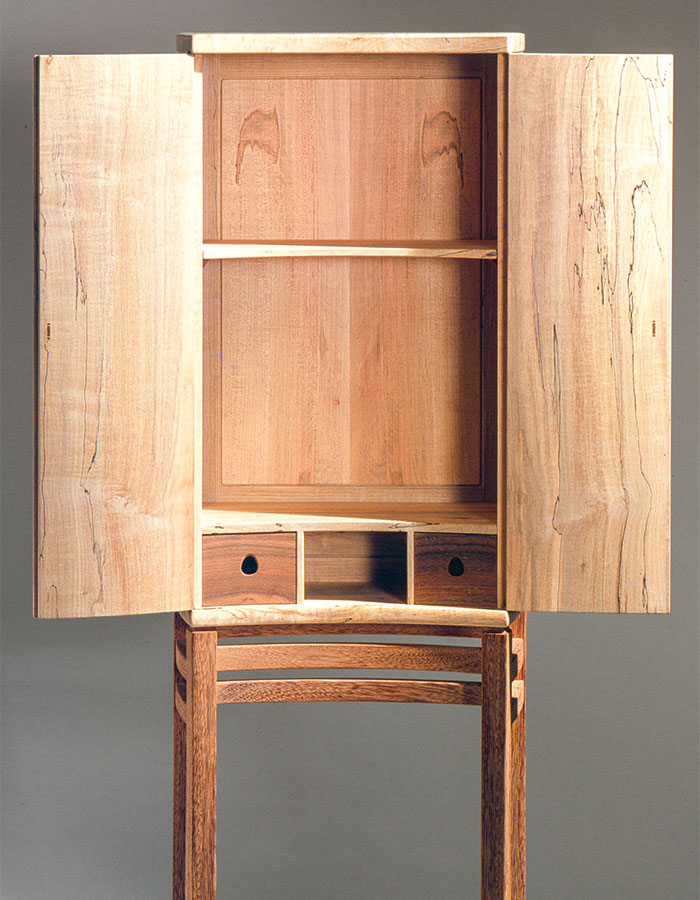
So many possibilities in legs, dimensions, materials
Students often start by thinking about a leg shape, both its profile and its cross-section. If the leg has a curve it must be fair—smooth, bumpless, kinkless. It needs the right amount of curvature, usually less than one first imagines. It is easier to make a cartoonishly curvy leg than an elegant and subtle leg. “Subtle” and “elegant” are subjective terms—more personal taste than anything—and we try to guide students to find their taste.
By we, I mean myself and the other instructors: Jim Budlong, Ejler Hjorth-Westh, Greg Smith, and shop manager and technician Todd Sorenson. Of course, we are not a homogenous group; we have variations in our styles and in where we place importance. Krenov was an advocate of curves that vary in their degree—he likened them to a blade of grass leaning in a breeze, with less curve closer to the ground where the stem is thicker, and greater curvature toward the tip.
There are more factors at play, too: What wood will be used? Will the leg be rotated at 45º to the case? If so, the leg is often five-sided in cross-section. The footprint of the stand should be slightly larger than the case, or at least it should be larger to the front, so the cabinet won’t fall forward when the weight of an open door or drawer shifts the center of gravity forward.
What should the cabinet’s dimensions be? Krenov’s cabinets were small. A smaller size intensifies the experience; more delicacy is involved in approaching the cabinet, opening it. There is also the relationship of cabinet and stand: A cabinet is necessarily boxy, enclosing space, while the stand is made of linear elements, lighter, with negative space. The pair should work together, neither top heavy nor the opposite.
There are myriad variations. The legs can step outward in chamfers—once, twice, more times? The doors can curve—concave or convex? Are the doors frame and panel, solid wood, veneered? Maybe tambour? Should the stand be curved too? Should the cabinet float above the stand or be visually (and literally) attached? Should there be drawers behind the doors, below the doors, or within the stand? Should there be rails close to the ground, adding visual weight? Should the stand be the same species or different from the case above?
My own cabinets on stands
The first piece I made when I came to study at The Krenov School (known then as College of the Redwoods) was of course a cabinet on a stand. It was Krenov’s last year teaching, and though he was sometimes downright bad-tempered, I wanted to participate in his tradition. I made a piece with a multitude of different woods as doors and drawer fronts—three doors and 10 drawers on a single, flat plane. Visually it somewhat resembles a quilt, and indeed I salvaged the woods from classmates and the scrap bin.
When I finally stood back from the piece, I thought the similarities and differences with a flat piece of art—a painting or drawing or print—were intriguing. Given that a cabinet is closed most of the time, and given that it sits against a wall, its doors become akin to a piece of art, and the carcase is the frame. What did this imply for a cabinet on a stand? To be sure, a person interacts with the piece, by opening and closing it, by placing things within it, and it contains space in a way that a paper or canvas object does not. It is simultaneously, and intriguingly, a two-dimensional and a three-dimensional object. I was also struck by how the stand occupies floor space, while not offering storage in return. This can be resolved by making a cabinet on a cabinet, or alternatively by forgoing the stand and making a wall cabinet.
–Laura Mays is director of The Krenov School.
From Fine Woodworking #308
Fine Woodworking Recommended Products

Compass

Drafting Tools



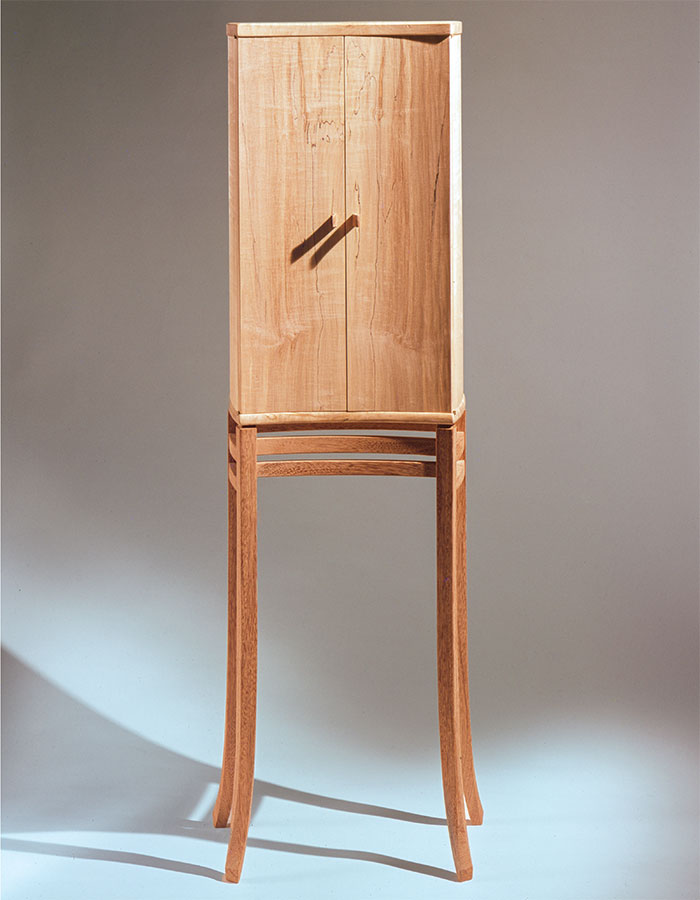

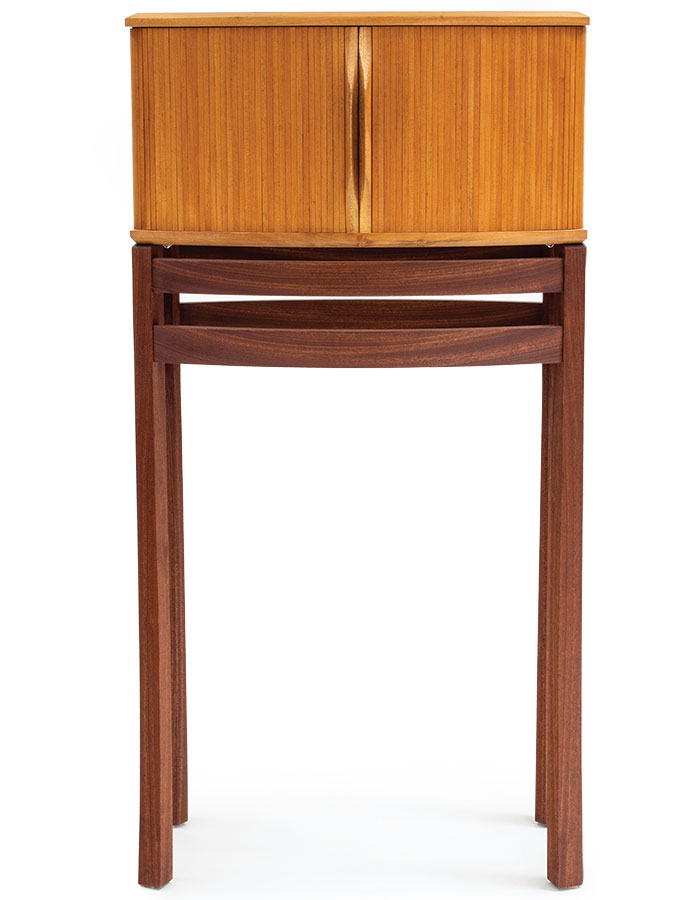
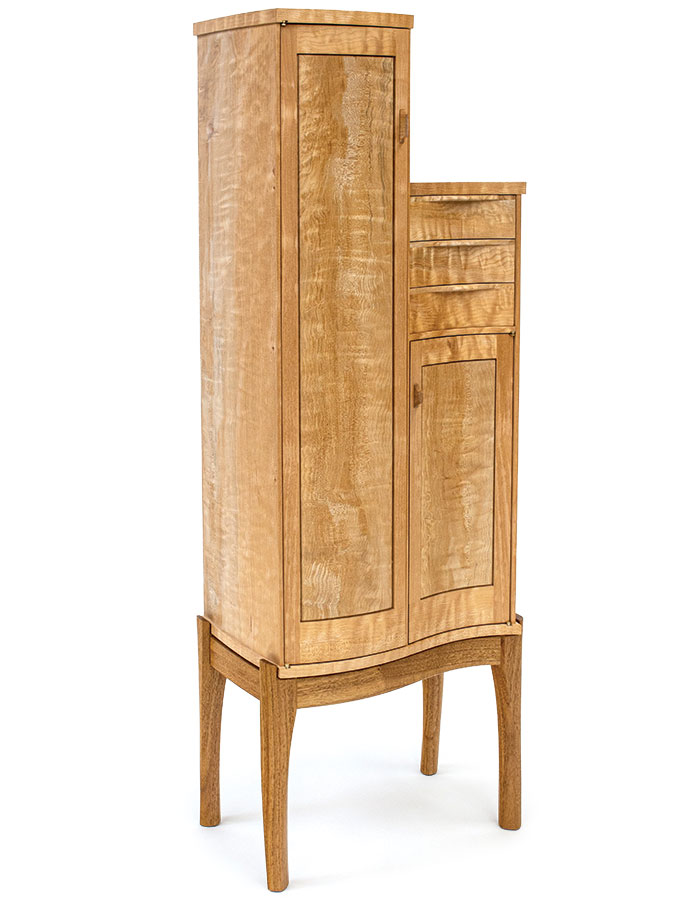
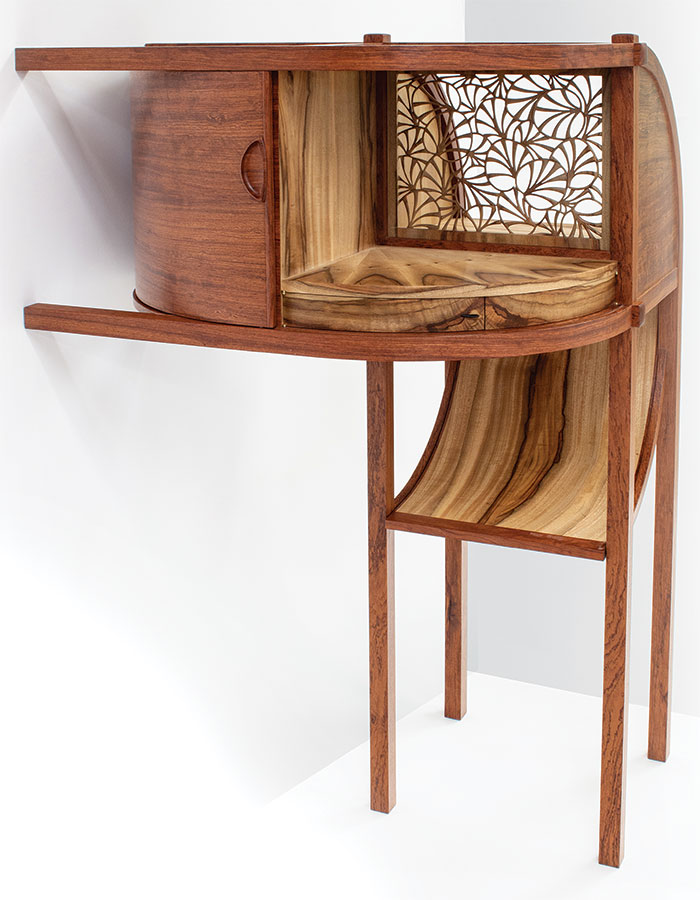
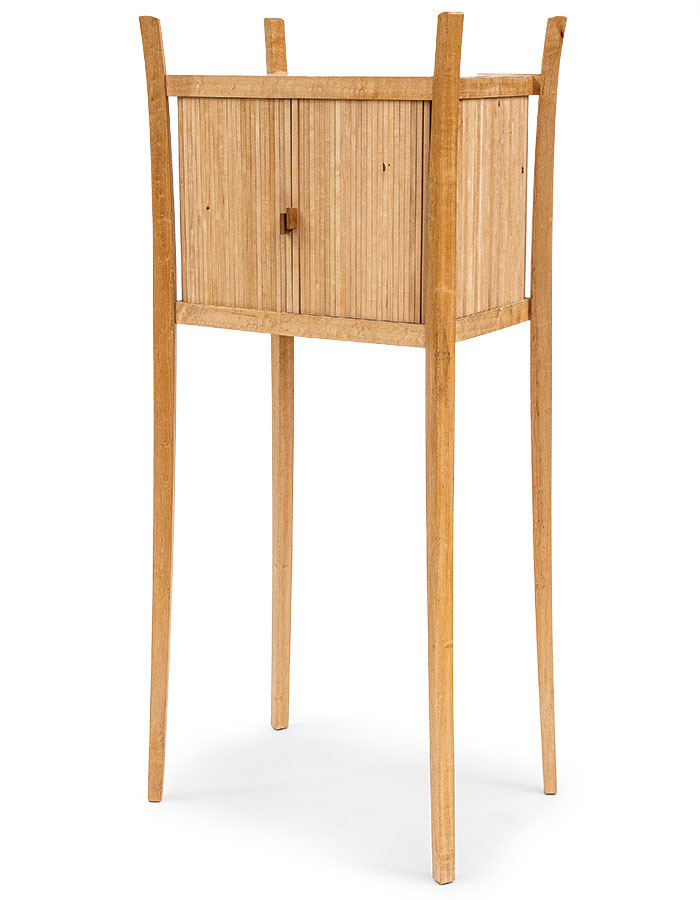
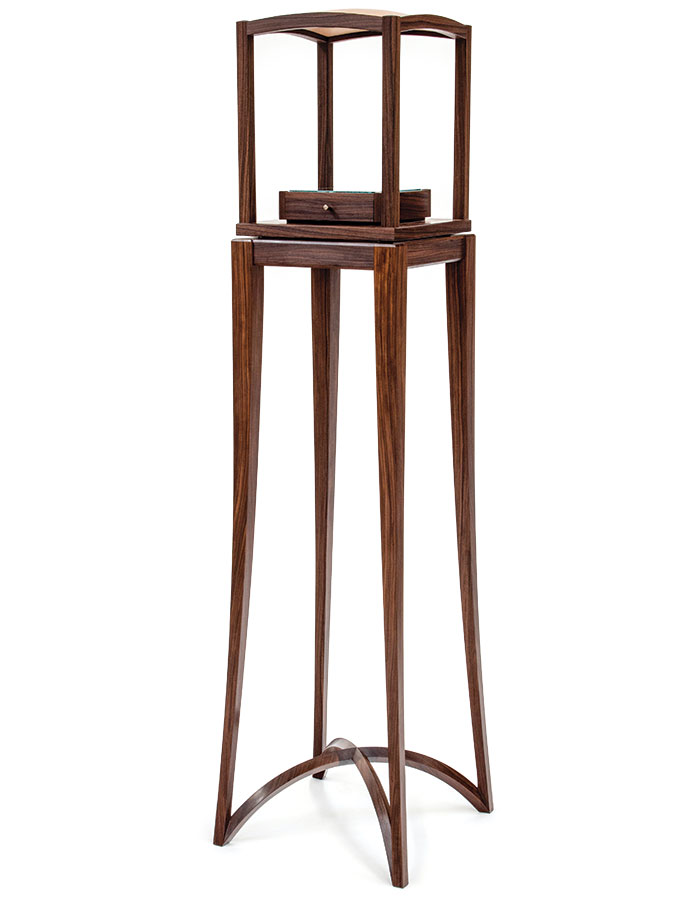
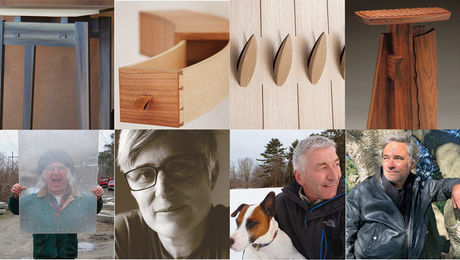
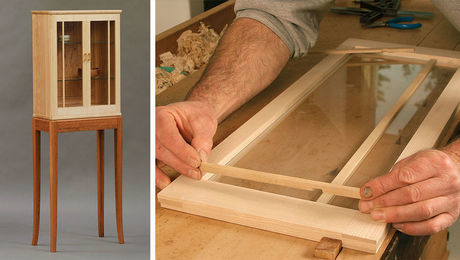
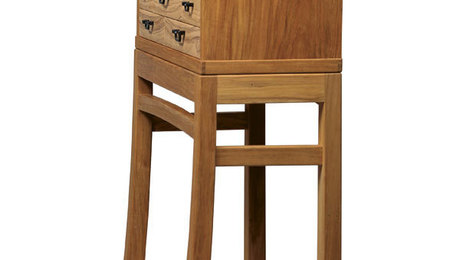






















Log in or create an account to post a comment.
Sign up Log in